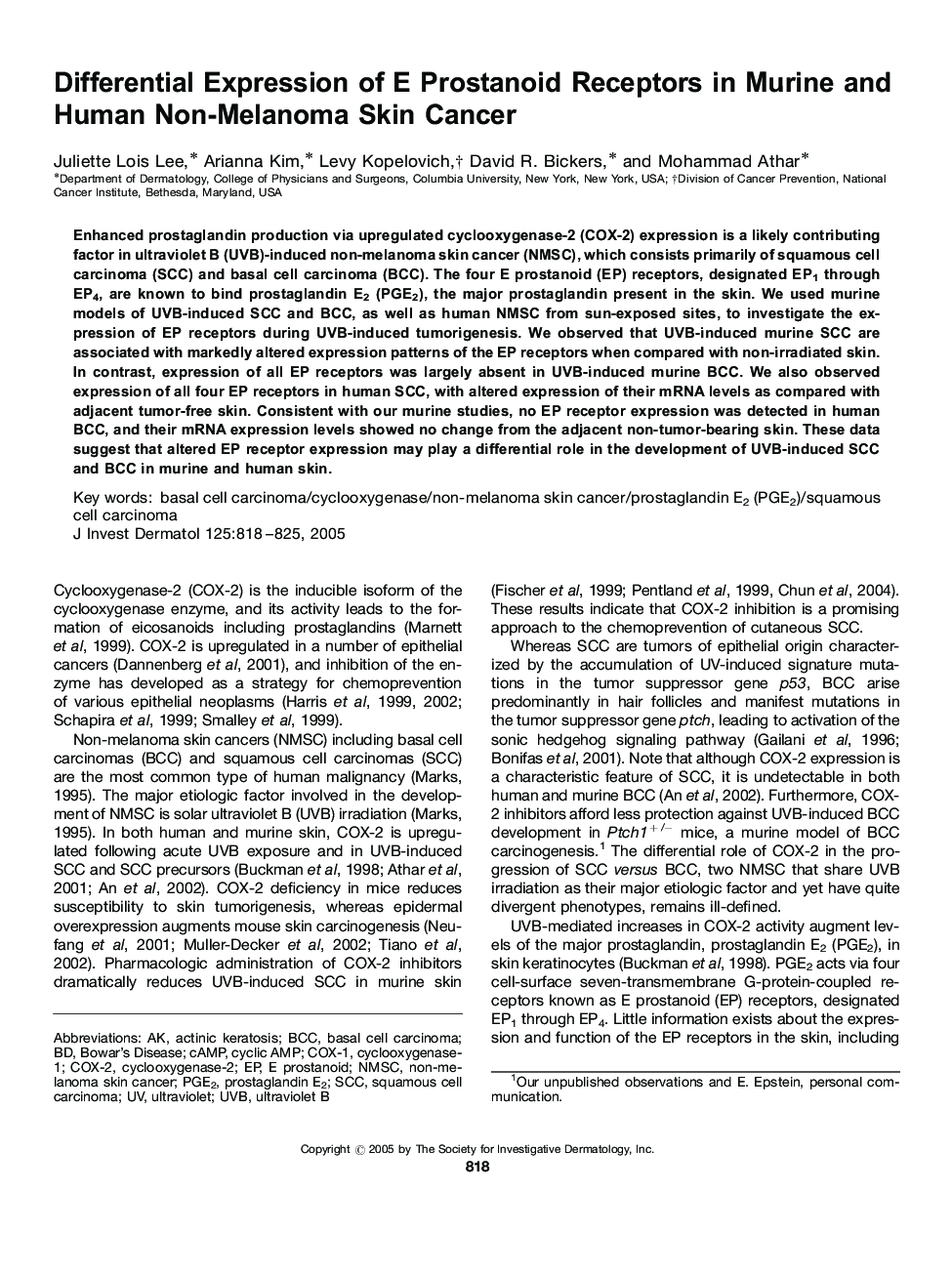| Article ID | Journal | Published Year | Pages | File Type |
|---|---|---|---|---|
| 9230202 | Journal of Investigative Dermatology | 2005 | 8 Pages |
Abstract
Enhanced prostaglandin production via upregulated cyclooxygenase-2 (COX-2) expression is a likely contributing factor in ultraviolet B (UVB)-induced non-melanoma skin cancer (NMSC), which consists primarily of squamous cell carcinoma (SCC) and basal cell carcinoma (BCC). The four E prostanoid (EP) receptors, designated EP1 through EP4, are known to bind prostaglandin E2 (PGE2), the major prostaglandin present in the skin. We used murine models of UVB-induced SCC and BCC, as well as human NMSC from sun-exposed sites, to investigate the expression of EP receptors during UVB-induced tumorigenesis. We observed that UVB-induced murine SCC are associated with markedly altered expression patterns of the EP receptors when compared with non-irradiated skin. In contrast, expression of all EP receptors was largely absent in UVB-induced murine BCC. We also observed expression of all four EP receptors in human SCC, with altered expression of their mRNA levels as compared with adjacent tumor-free skin. Consistent with our murine studies, no EP receptor expression was detected in human BCC, and their mRNA expression levels showed no change from the adjacent non-tumor-bearing skin. These data suggest that altered EP receptor expression may play a differential role in the development of UVB-induced SCC and BCC in murine and human skin.
Keywords
Related Topics
Health Sciences
Medicine and Dentistry
Dermatology
Authors
Juliette Lois Lee, Arianna Kim, Levy Kopelovich, David R. Bickers, Mohammad Athar,
